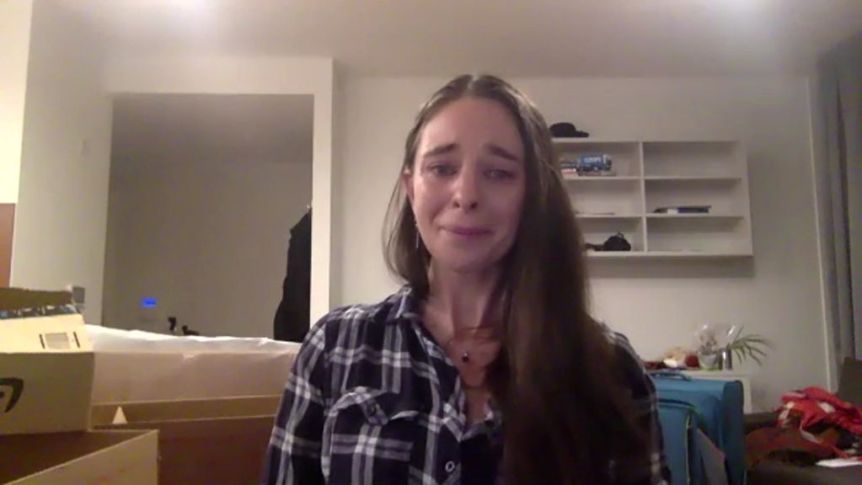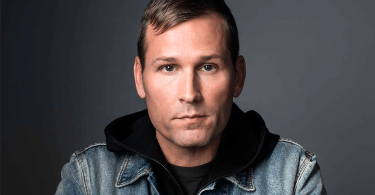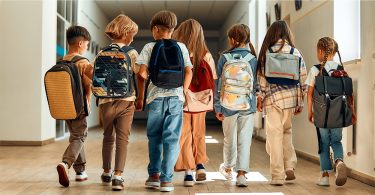Australia is now facing the “second wave” of travellers who want to return home, but there is a mountain of myths that need to be busted about the process, one expert warns.
Key points:
- Travel adviser says it will be particularly hard to return in next six weeks
- Caps on international arrivals are just part of the problem
- Doctor says there are two key impediments to regional hotel quarantine
Ann-Catherine Jones is a travel adviser who has become something of a flight whisperer in recent months as she navigates complicated regulations to help stranded Australians get back.
She said the next six weeks would be especially hard given government caps on international arrivals, but added that this was just one part of the puzzle.
“There’s a bit of myth busting that needs to happen with the general public on stranded Australians,” she said.
First, Ms Jones said no-one she dealt with was travelling for leisure. Instead, it was a mix of work commitments and family tragedies.
Second, many people were only just now looking for flights, having always planned to come back in 2021.
“We’ve got people who are finishing their jobs, that they’re at the end of their contracts,” she said.
“We’ve got health workers overseas who are needing to be repatriated. We’ve got families needing to come back from the US with their dogs and their kids.
Another misconception, according to Ms Jones, was the number of seats available on each flight that did make the trip.

Last week, Australian Alyse Brown came to tears describing her attempts to fly home from the UK.
“They send you an email, they send you a link. They put out two flights, so that’s 400 seats, and everybody simultaneously … tries at once,” she said.
“I tried three times to get through that system and they were gone in 10 minutes.”
Ms Jones said while the aircraft itself may have 400 seats, they only had between 25-50 available due to daily caps on international arrivals.
On Friday, National Cabinet all but ruled out lifting the cap for almost another month after they had been temporarily halved in NSW, Queensland and Western Australia to halt the spread of the new UK variant of the virus.
About 39,000 people are currently registered with the Department of Foreign Affairs and Trade as being overseas and wanting to return.
It’s not just what you know, but who…
Ms Jones said caps on arrivals were just part of the story, and the UK variant was causing issues in other ways.
“It’s actually impacting a couple of our transit destinations as well,” she said.
New border restrictions in both Hong Kong and Singapore meant certain flights from the UK couldn’t stop there, and Australians who had booked flights that had planned to transit through those airports suddenly found themselves dumped.
“We can’t get people out of the UK to Asia, and so all of those passengers that we had booked on those carriers, we are now looking for alternatives with,” she said.
Ms Jones warned there were no quick fixes and Australians looking to travel should allow a two to three-month lead-in time.
However, she said travel advisers could give people an edge.
“We actually have all the up-to-date information at our fingertips,” she said.
“We have access to the six airlines that are travelling here at the moment. We also get access to the Qantas repatriation flights when they drop into the system.”
What’s more, Ms Jones said they were leveraging their relationship with airlines to give priority to their clients.
She cited examples of bringing Australians back from Ghana, Israel, America and Europe, as well as one client who was stuck in Morocco until she called a contact at an airline who secured him a seat.
Ms Jones said frustrated travellers were sending emails to the airlines’ head offices in other countries, without realising they all had representatives in Australia who travel advisers had existing connections with.
“If I’m honest, now is not the time to be booking online and crossing your fingers and hoping that you don’t get bumped,” Ms Jones said.
The two hurdles to regional quarantine
More than 450,000 Australian citizens or permanent residents have returned since March 13 last year, when the Federal Government first urged people to come back due to COVID.
The debate has now turned to whether quarantine hotels should be set up in regional areas to either relieve the pressure on capital cities, or provide more spaces for returned travellers.
Australian Medical Association vice-president Chris Moy said that wasn’t as simple as it sounded, and authorities were in a bind on the issue.
“We do need to bring Australians back home, we’re seeing Australians that are coming home and they’re pretty scarred about what’s happening over there,” he said.
“But the flip side [hotel quarantine] is our first line of defence, and we really do need to do absolutely everything that we can do.”


Dr Moy said there were two key impediments to regional quarantine.
The first was the difficulty getting qualified staff to relocate to remote areas and work on site.
The second was the requirement for high-quality medical services nearby.
“Because individuals who have COVID can get sick very, very quickly,” he said.
“I’ve heard stories about even in South Australia, where they tried to put people in the country here … and they decompensated extremely quickly.
“So I do understand the wish to move the problem into the country, but it’s not as simple as that.”






